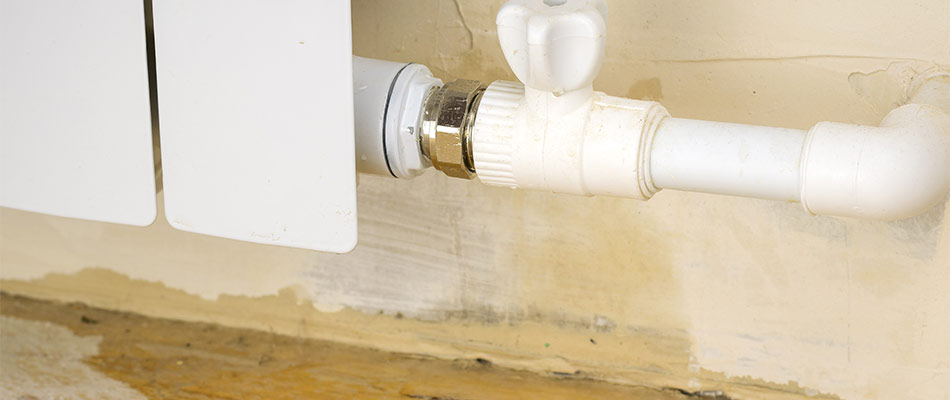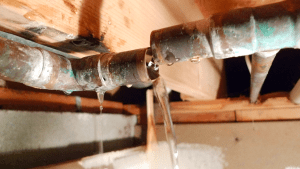Unmasking Concealed Water Line Leaks: Six Clever Detection Hacks
Unmasking Concealed Water Line Leaks: Six Clever Detection Hacks
Blog Article
We've found this post about Detecting hidden plumbing leaks directly below on the net and think it made good sense to discuss it with you on my blog.

Early detection of leaking water lines can alleviate a possible disaster. Some small water leakages might not be noticeable.
1. Analyze the Water Meter
Every home has a water meter. Examining it is a proven manner in which helps you discover leaks. For starters, turn off all the water resources. Ensure no one will purge, use the tap, shower, run the cleaning machine or dishwashing machine. From there, most likely to the meter as well as watch if it will change. Given that no one is using it, there must be no movements. That shows a fast-moving leak if it relocates. If you detect no changes, wait an hour or 2 as well as check back once again. This means you may have a slow leak that can even be underground.
2. Check Water Usage
Examine your water costs and also track your water intake. As the one paying it, you need to notice if there are any inconsistencies. If you identify sudden changes, regardless of your usage coinciding, it implies that you have leaks in your plumbing system. Remember, your water costs must fall under the very same range every month. An abrupt spike in your expense indicates a fast-moving leak.
On the other hand, a consistent rise every month, despite having the very same practices, reveals you have a slow leak that's likewise gradually escalating. Call a plumber to thoroughly check your property, particularly if you feel a warm area on your floor with piping underneath.
3. Do a Food Coloring Examination
When it comes to water consumption, 30% comes from commodes. If the color somehow infiltrates your bowl throughout that time without flushing, there's a leakage in between the tank and bowl.
4. Asses Exterior Lines
Don't fail to remember to check your outside water lines as well. Ought to water seep out of the link, you have a loose rubber gasket. One tiny leakage can waste bunches of water and surge your water expense.
5. Evaluate the circumstance and inspect
Home owners ought to make it a practice to check under the sink counters and also even inside cabinets for any bad odor or mold growth. These two warnings show a leakage so timely interest is required. Doing routine evaluations, even bi-annually, can conserve you from a significant issue.
Examine for stainings as well as damaging as a lot of pipes and home appliances have a life expectations. If you suspect dripping water lines in your plumbing system, do not wait for it to rise.
Early discovery of dripping water lines can minimize a possible catastrophe. Some small water leaks might not be noticeable. Examining it is a guaranteed method that helps you discover leakages. One small leak can throw away bunches of water as well as surge your water bill.
If you believe leaking water lines in your plumbing system, do not wait for it to intensify.
WARNING SIGNS OF WATER LEAKAGE BEHIND THE WALL
PERSISTENT MUSTY ODORS
As water slowly drips from a leaky pipe inside the wall, flooring and sheetrock stay damp and develop an odor similar to wet cardboard. It generates a musty smell that can help you find hidden leaks.
MOLD IN UNUSUAL AREAS
Mold usually grows in wet areas like kitchens, baths and laundry rooms. If you spot the stuff on walls or baseboards in other rooms of the house, it’s a good indicator of undetected water leaks.
STAINS THAT GROW
When mold thrives around a leaky pipe, it sometimes takes hold on the inside surface of the affected wall. A growing stain on otherwise clean sheetrock is often your sign of a hidden plumbing problem.
PEELING OR BUBBLING WALLPAPER / PAINT
This clue is easy to miss in rooms that don’t get much use. When you see wallpaper separating along seams or paint bubbling or flaking off the wall, blame sheetrock that stays wet because of an undetected leak.
BUCKLED CEILINGS AND STAINED FLOORS
If ceilings or floors in bathrooms, kitchens or laundry areas develop structural problems, don’t rule out constant damp inside the walls. Wet sheetrock can affect adjacent framing, flooring and ceilings.
https://www.servicemasterbyzaba.com/blog/how-to-detect-water-leakage-in-walls/

I stumbled upon that blog posting about Top leak detection hacks while doing a lookup on the internet. You should set aside a second to promote this blog if you enjoyed it. Thanks a lot for your time invested reading it.
Apply Now Report this page